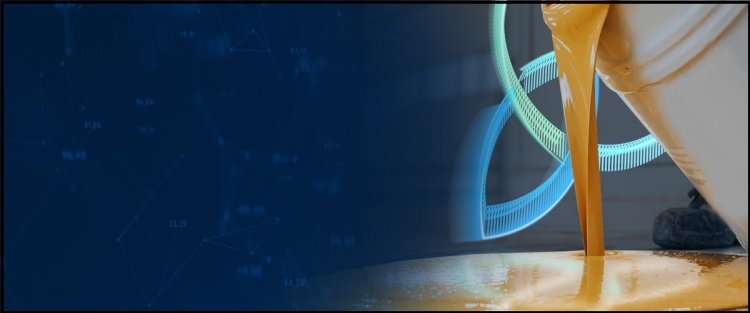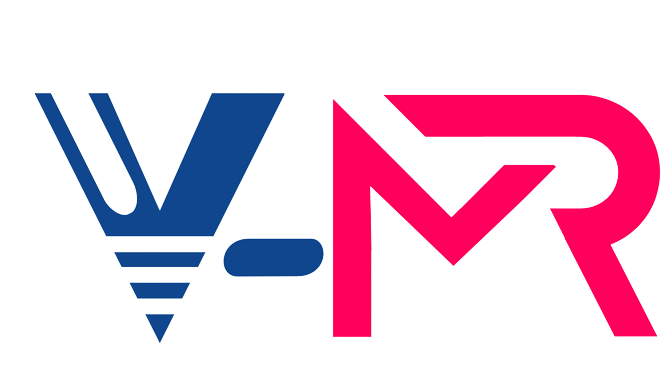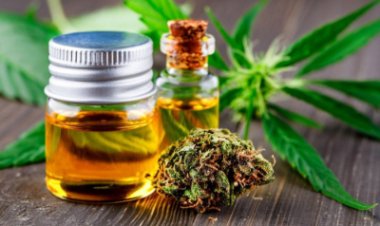How Glycol Ethers Are Shaping the Future of Chemical Formulations in 2025 and Beyond
Explore how glycol ethers are revolutionizing chemical formulations in 2025 and beyond. Discover key trends, sustainable innovations, and industry growth drivers shaping the future of this versatile solvent market.

How Glycol Ethers Are Shaping the Future of Chemical Formulations in 2025 and Beyond
The chemical industry is undergoing a transformation, driven by an increasing demand for sustainable, high-performance, and versatile chemical compounds. Among the key players in this shift are glycol ethers, a group of solvents known for their exceptional solvency, low volatility, and compatibility with a variety of substances. As we move into 2025 and beyond, glycol ethers are poised to play a pivotal role in shaping the future of chemical formulations across multiple industries.
This blog delves into the glycol ethers market, focusing on how these solvents are driving innovation, enhancing performance, and contributing to sustainability goals in a range of chemical applications.
Understanding Glycol Ethers
Glycol ethers are a family of solvents derived from alkylene glycols, such as ethylene glycol or propylene glycol. These solvents are widely used due to their unique properties, including:
- High solvency power
- Low odor
- Excellent coalescing ability
- Low toxicity (in many cases)
They are commonly used in products like paints and coatings, cleaning agents, pharmaceuticals, cosmetics, and inks. Glycol ethers are generally divided into two categories:
- E-series (ethylene-based) – typically used in cleaning agents, paints, and coatings.
- P-series (propylene-based) – preferred for their lower toxicity, making them suitable for cosmetics, pharmaceuticals, and food-related applications.
Market Outlook for Glycol Ethers in 2025 and Beyond
The global glycol ethers market is projected to witness significant growth through 2025, driven by increasing industrial applications, demand for eco-friendly solvents, and regulatory shifts favoring low-VOC (volatile organic compound) solutions.
Key Trends Shaping the Glycol Ethers Market
- Sustainability and Green Chemistry: As environmental regulations become more stringent, manufacturers are turning to glycol ethers as environmentally safer alternatives to traditional solvents. P-series glycol ethers, in particular, are gaining traction due to their low toxicity and biodegradability.
- Growing Demand in Paints and Coatings: The construction and automotive industries are fueling demand for glycol ethers as they offer excellent solvency, drying time optimization, and formulation flexibility in paints and coatings.
- Rise in Water-Based Formulations: Glycol ethers are widely used in water-based formulations, offering reduced emissions and better health and safety profiles. This is especially important in regions implementing tight VOC regulations.
- Expanding Personal Care and Cosmetic Applications: With increased focus on safe and gentle formulations in skincare and personal care products, glycol ethers are becoming popular as solvents and carriers due to their mildness and efficacy.
- Technological Advancements and Product Innovation: Leading chemical companies are investing in R&D to develop customized glycol ethers for specific applications, offering enhanced performance characteristics such as improved evaporation rates and compatibility.
Applications Driving Future Demand
- Paints and Coatings: Glycol ethers serve as coalescing agents and viscosity modifiers. Their use in water-based paints is crucial for film formation, gloss retention, and pigment dispersion.
- Cleaning Products: Due to their high solvency power and relatively low toxicity, glycol ethers are widely used in household, industrial, and institutional cleaners. They effectively dissolve greases, oils, and other contaminants.
- Pharmaceuticals: In pharmaceutical formulations, glycol ethers act as excipients or solvents for active ingredients. Their compatibility with various drug formulations makes them indispensable.
- Printing Inks: Glycol ethers improve ink drying times and ensure uniform pigment dispersion. Their role in ink formulations is crucial for high-quality printing.
- Cosmetics and Personal Care: Used as solvents and emollients, glycol ethers are incorporated in lotions, creams, and hair care products, offering stability and performance benefits.
- Electronics Industry: In electronics manufacturing, glycol ethers are used for their cleaning and degreasing properties. They are also used in photoresists and electronic component manufacturing.
Regulatory Landscape and Environmental Compliance
Glycol ethers are subject to various regulatory standards across different regions:
- EPA (USA): Regulates usage based on VOC emissions and health impact.
- REACH (Europe): Enforces strict compliance for safe use and disposal of chemical substances.
- Asia-Pacific: Rapidly aligning with global standards to ensure environmental and health safety.
Companies are being pushed to innovate and transition to safer glycol ether formulations, especially P-series ethers with lower toxicity profiles.
Competitive Landscape and Key Players
The glycol ethers market is moderately consolidated, with key players focusing on mergers, acquisitions, and strategic partnerships to expand their market presence.
Leading Companies:
- Dow Chemical Company
- BASF SE
- Eastman Chemical Company
- LyondellBasell Industries
- Huntsman Corporation
These companies are investing in research and innovation to offer sustainable glycol ether solutions and gain a competitive edge.
Innovation in Glycol Ether Formulations
- Bio-Based Glycol Ethers: Sourcing glycol ethers from renewable resources is becoming a trend to reduce the environmental footprint. Bio-based glycol ethers provide similar solvency with reduced environmental impact.
- Custom Blends for Niche Applications: Tailored glycol ether blends are being developed for niche markets like aerospace, electronics, and specialized coatings.
- Smart Solvent Systems: Advanced glycol ether systems are now designed to respond to temperature, pH, and pressure, making them suitable for high-tech applications.
Future Growth Opportunities
- Expansion into Emerging Economies: Rapid industrialization in Asia, Africa, and Latin America offers significant growth opportunities for glycol ether manufacturers.
- Integration with Circular Economy Models: Glycol ether recycling and reuse in closed-loop systems can contribute to circular economy goals, minimizing waste and reducing cost.
- Collaborations with End-Use Industries: Partnering with industries like automotive, construction, and healthcare will help create customized glycol ether solutions, increasing value and adoption.
- Digitalization and Smart Manufacturing: AI and IoT technologies are enabling smarter production processes and real-time monitoring of chemical formulations, enhancing efficiency and quality.
Challenges and Mitigation Strategies
- Toxicity Concerns some E-series glycol ethers are under scrutiny due to potential health risks. Switching to safer P-series variants and increasing transparency in safety data can address these concerns.
- Raw Material Price Volatility Fluctuations in petrochemical prices impact production costs. Investing in alternative feedstocks and long-term supplier agreements can mitigate risks.
- Complex Regulatory Environment Navigating varying regulations across countries can be challenging. Establishing compliance teams and collaborating with local regulatory bodies can ease market entry.
Conclusion
As the global chemical industry navigates a complex landscape of sustainability, performance, and safety, glycol ethers are emerging as indispensable components in chemical formulations. Their versatility, compatibility, and growing acceptance in green chemistry make them ideal for future-forward applications across industries.
From enhancing paint durability and cleaning effectiveness to powering pharmaceutical and cosmetic innovations, glycol ethers are poised to redefine how we formulate chemicals in 2025 and beyond. With ongoing advancements in bio-based alternatives and smart solvent systems, glycol ethers are not only shaping the present but are paving the way for a safer, more efficient, and sustainable future.


















